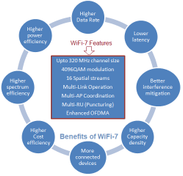Telepresence: Advantages and Disadvantages
Advertisement
This page covers the advantages and disadvantages of telepresence systems, along with a basic overview of the technology.
What is a Telepresence System?
Introduction: In today’s globalized workplace, close interaction is crucial for multinational teams scattered across different regions. Telepresence systems facilitate this interaction using the latest IP-based devices.
Here are the typical components found in a telepresence system:
- Codec
- Large screen monitor
- Microphones and speakers
 Image Alt: Telepresence system
Image Alt: Telepresence system
A conference call is a simple form of virtual telepresence. Audio or video conferencing gives participants a sense of presence, making them feel as if they’re sitting at the same table in the same room.
A complete telepresence system involves dedicated hardware and software linked by sufficient bandwidth to ensure a high throughput of HD audio/video information. A successful system needs IP-based connectivity with enough bandwidth to transmit and receive multimedia data.
Telepresence systems primarily use two protocols:
- SIP: Standardized by the IETF (Internet Engineering Task Force).
- H.323: Standardized by the ITU (International Telecommunication Union).
Example: Cisco CTS-3000
Benefits or Advantages of Telepresence Systems
The following are the key benefits of telepresence:
- Effective Nonverbal Communication: Telepresence enables you to see facial expressions, body language, and hear vocal nuances, leading to richer and more effective communication.
- Enhanced Engagement: By improving visual interaction, telepresence reduces distractions and promotes a more engaging meeting experience.
- Removes Business Bottlenecks: Telepresence helps overcome geographical limitations, allowing for faster decision-making and improved collaboration, thus removing obstacles to business growth.
- Reduced Travel: Telepresence significantly reduces or eliminates the need for physical travel, saving employees valuable time.
- Cost Savings: By reducing travel, companies can save substantially on travel-related expenses.
Drawbacks or Disadvantages of Telepresence Systems
Here are the drawbacks associated with telepresence:
- Bandwidth Requirements: A significant amount of bandwidth is necessary to create a truly immersive experience that mimics physical presence.
- Low Latency is Critical: Extremely low delay over the IP connections between the two telepresence systems is essential for smooth, natural communication.
- Vendor Compatibility Issues: User experience can suffer when telepresence systems from different vendors communicate, even if they use the same protocols. This is often due to variations in implementation.
- High Initial Investment: High-resolution telepresence systems require a considerable initial investment, adding to the company’s expenses.
- Limited Movement: Stationary cameras set up in predetermined rigs can restrict movement, confining participants to the areas covered by the cameras.
Understanding these advantages and disadvantages is crucial for determining if a telepresence system is right for your organization.
 RF
RF

